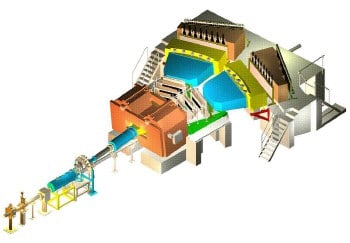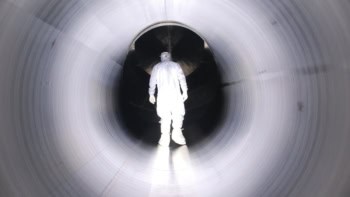Particle physicists at CERN have created large numbers of pionium atoms -- exotic atoms in which positive and negative pions are bound together -- for the first time. By allowing more accurate measurements of the lifetime of pionium, the DIRAC (Dimeson Relativistic Atomic Complex) experiment will lead to a better understanding of the strong interaction (B Adeva et al. 2004 J. Phys G: Nucl. Phys. in press).

The strong interaction — which binds quarks together inside protons and neutrons — is described by a theory called quantum chromodynamics. Although the predictions of QCD have been confirmed for experiments with high energy transfer, the theory has not been tested as thoroughly at low energies.
A positive pion (π+) contains an up quark and a down antiquark held together by the strong force, whereas a negative pion (π–) contains the antimatter equivalent. Since pions have relatively low momenta in pionium, their interaction is described by low-energy QCD. The theory predicts that a pionium atom should decay into two neutral pions and have a lifetime of about 3 femtoseconds (3 x 10-15 seconds). In many ways pionium, which is denoted by A2π, is an exotic version of the hydrogen atom, although both its constituents have the same mass and both are unstable.
The first pionium atoms were created at the Serpukhov U-70 synchrotron in Russia in 1993. Although only about 270 atoms were detected, this result helped set a lower limit of 1.8 femtoseconds on the lifetime. In the DIRAC experiment, which includes physicists who were involved in the Serpukhov experiment, a 24 GeV proton beam from the Proton Synchrotron at CERN is directed onto a thin nickel target to produce pionium atoms in a proton-nuclear reaction.
The atoms then break up into positive and negative pions that are subsequently detected by a “double arm magnetic spectrometer” (see figure). This spectrometer has been specially designed to distinguish pairs of pions from pionium break up over the huge background of pairs produced in the same target.
The DIRAC collaboration was able to detect more than 5000 pionium break ups from a total of 6.4 x 108 events, which will allow the lifetime to be determined to within statistical errors of 15%. The team hopes to reduce this error to just 10% in the future.



